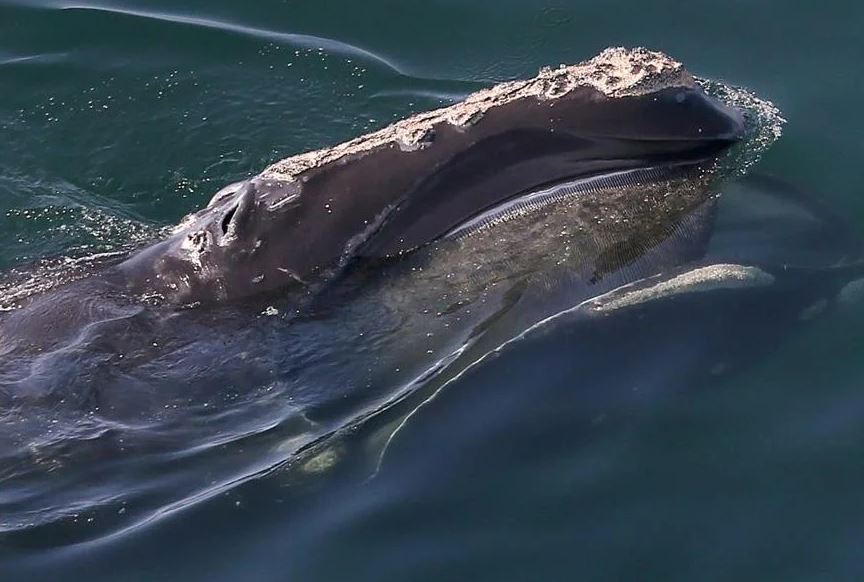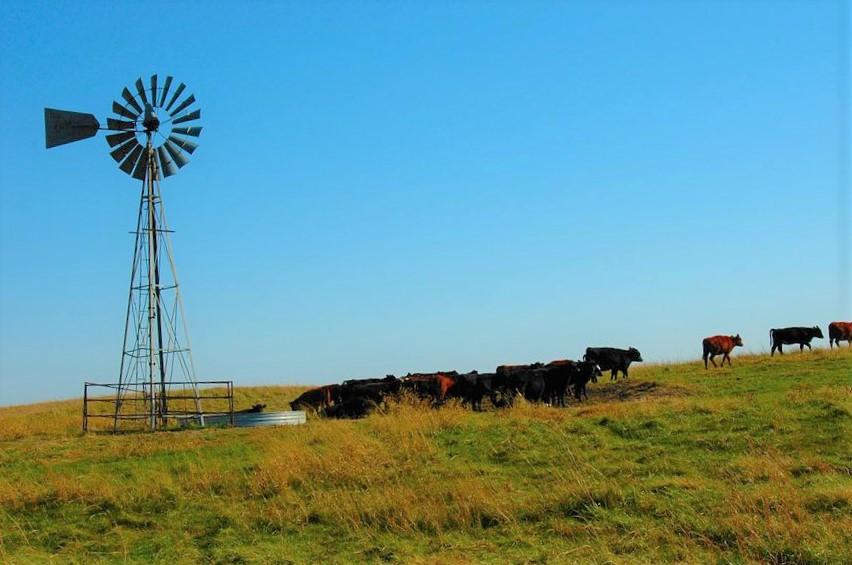Originally published in the Spring 2021 issue of RANGE magazine
History’s Hard Lessons Unheeded
Why would Colorado voters choose to bring medieval monsters into 21st Century landscapes?
By Marjorie Haun
Wolves are monsters of lore. Mythology clouds their reality but not in the way many believe. In the Bible, grave warnings cast wolves as symbols of ravening spiritual foes. Tales of fearsome wolves ripping apart livestock and taking humans as prey go back to Medieval Europe, and artistic depictions of attacks bolster the accounts with terrifying familiarity. Portrayals of wolves as dangerous predators with fantastic powers to proliferate in numbers and area, decimate big game and raze whole herds of sheep in one night are not myth. The most dangerous myths surrounding wolves are twisted versions of reality that assert their presence is necessary to strike a biological balance in North American ecosystems, and that they pose little threat to wildlife, livestock and people. Since the 1970’s, when environmentalists started pushing the “reintroduction” of wolves into the United States, we have seen, yet again, that bringing apex predators into tamed landscapes is a monstrous mistake.
In the November 2020 election, Proposition (Prop) 114, which will require the Colorado Parks and Wildlife Commission to bring wolves into the state beginning in 2023, and somehow “manage” them once introduced, passed by a hair’s breadth margin. The Rocky Mountain Wolf Action Fund, which backed the proposal and raised nearly $2 million dollars for the effort, is composed of many of the usual suspects in left-wing politics and environmental radicalism, including the Soros-funded Tides Foundation, the Center for Biological Diversity, the Sierra Club and uber leftist mogul Ted Turner. Democrat donor and founder of the Biophilia Foundation, Richard Pritzlaff, alone donated over $250,000 to the scheme.
The wolf initiative, referred to as “ballot box biology” by opponents, is set to reinstate an apex predator that hasn’t had a significant presence in Colorado’s ecosystems since the mid-1920’s. This attempt at “rewilding” is designed to connect wolf populations in Arizona and New Mexico with those in northern mountain states, allegedly to “save” a species that is neither threatened nor endangered. But Prop 114 was based on negligible science and a lot of specious assumptions. First, wolves in the northern states are anything but “endangered.” In fact, gray wolf populations have so successfully recovered that the U.S. Fish and Wildlife Service (USFWS) recently took them off the Endangered Species list and devolved management authority to the states and Native American Tribes. Second, wolves have been sighted in parts of northern Colorado for a number of years. There is no need to “introduce” a predator into a state where populations appear to be spreading. Third, balanced biodiversity is possible without wolves which have proven to be harmful to big game species. Moose and elk populations in some parts of Wyoming, Idaho and Montana have collapsed since wolves were introduced just twenty-five years ago. So much for biodiversity.
Scott Rockholm, an Idaho native and writer and filmmaker, has studied the impact of wolves on livestock and populations of large game species in the Mountain West, and has seen the carnage that inevitably follows wolf introduction schemes. He explains how it began: “Ignorance proved to doom the good people of Idaho and Montana, because the Federal Government had been infiltrated with environmental radicals, and they already had a scheme to infest the West with wolves. In 1995, after a failed attempt to secure wolves from Canada the previous year, the Federal Government secured a total of sixty-six wolves from Northern British Columbia and illegally transported those wolves to the United States. They didn’t secure the permits, and more importantly, they did not secure the proper testing to ensure that the wolves would not transmit disease.” Like so many hasty, non-scientific environmentalist plans to save nature, wolves brought with them unseen dangers. Rockholm continues, “They did not do the proper veterinary testing required by law. Ed Bangs, the Wolf Project Leader and USFWS, pushed ahead, ignoring the law and the science entirely. Individuals I interviewed, that were participating in this release testified to me on film that the wolves were never treated or medicated for any disease or parasite. This presents a massive problem for livestock growers, as well as rural Americans that have wolves present in and around their homesteads.” Rockholm cautions the people of Colorado: “What can Colorado expect? For the first through the fifth year, you can expect your elk populations to be exterminated and quietly, your moose populations will vanish. The moose will take the brunt of the damage before the public will even notice. In the interim, wolf populations will explode, and the need to kill them will grow. Livestock will become the target in the buffer zones, in between population centers. Wolves will spread disease throughout the wildlife herds, landscape, and entirely infest ranch lands with deadly disease and parasites. History doesn’t lie.”

Rockholm’s predictions for Colorado’s future are particularly dire because trapping was outlawed in the state in 1997, and it is likely that the state’s progressive government will grant unnecessary protections to the predators. The future cost to taxpayers for predator control, reimbursements to ranchers for dead livestock, and losses to hunting and outfitting industries, at this point is incalculable.
Denny Behrens, a sportsman who for many years has been involved with big game policy at the state level, co-chaired the Colorado Stop the Wolf Coalition. Behrens is deeply troubled by the passage of the wolf initiative. He says, “It’s a continuance of the radical environmental agenda. The Canadian Gray Wolf was and is still being used as a biological weapon to cause economic harm across the West.” Behrens points out that wolves are also a means to other political ends. He continues, “Front Range voters had no true understanding of the harm that introducing wolves in rural Colorado would do. If wildlife populations decline, hunting opportunities decline, then the need for guns declines. It’s all part of the agenda.” Having tracked the impact of wolves on big game in other states, Behrens explains, “What we have seen in the states where wolves were introduced in 1995 and 1996 is a steady decline in big game populations. Certain elk herds, such as the Lolo herd in Idaho, have declined to the point that Idaho Fish and Game believe the herd is now on the verge of extinction. The Wyoming Wolf report of 2017 shows major declines in Elk and especially Moose. In 1996, Wyoming had over 10,000 Moose. By 2017 that figure had dropped to 1,300. Due to the increase of wolf predation. Outfitting businesses have shut down in Montana and Idaho due to the lack of the Elk.”
Sheep and cattle rancher and former La Plata County Commissioner and State Representative, J. Paul Brown, has endured predation by mountain lions and bears and fears what lies ahead. He recalls, “This last summer we had our biggest one-time loss when a bear stampeded one bunch of sheep across a small, brushy ravine and 54 lambs and 2 ewes were killed from other sheep running over the top of them.” He goes on, “Many years ago, I killed a depredating bear out of my bedroll. I can just imagine what we will face with wolves.” Aware of evolving cautionary tales in other states, Brown declares, “Colorado ranchers will face the same devastation of livelihoods as ranchers in Wyoming, Idaho, and Montana. I cry when I hear the stories of the wolf damage to ranchers in those states. It is criminal what is happening to them. Livestock losses amount to a property taking, and as is guaranteed in the 5th Amendment, government should pay for that taking.” He continues, “I do believe it will be harder for the wolf to survive in Colorado because there are so many more people in Colorado as compared to other Western States. And ranchers, wildlife advocates, and many more friends are going to fight introduction tooth and toenail!”
As Scott Rockholm asserts, “History doesn’t lie.” If more voters would open their eyes to the grim reality playing out in other mountain states, perhaps Prop 114 would have failed. Or, since wolves are rarely an urban problem, perhaps many voters just don’t care. Unfortunately for Colorado and other western states struggling under ill-advised urban progressive policies, it’s the rural folks, livestock and wildlife that will bear the cost.





Hopefully the wolves do not eat some sight seeing folks there.
Wolves killing people is not uncommon though.
Wolves are the most efficient killing and maiming machine ever encountered by man.
To propagate the afore under any guise is both ignorant and stupid.